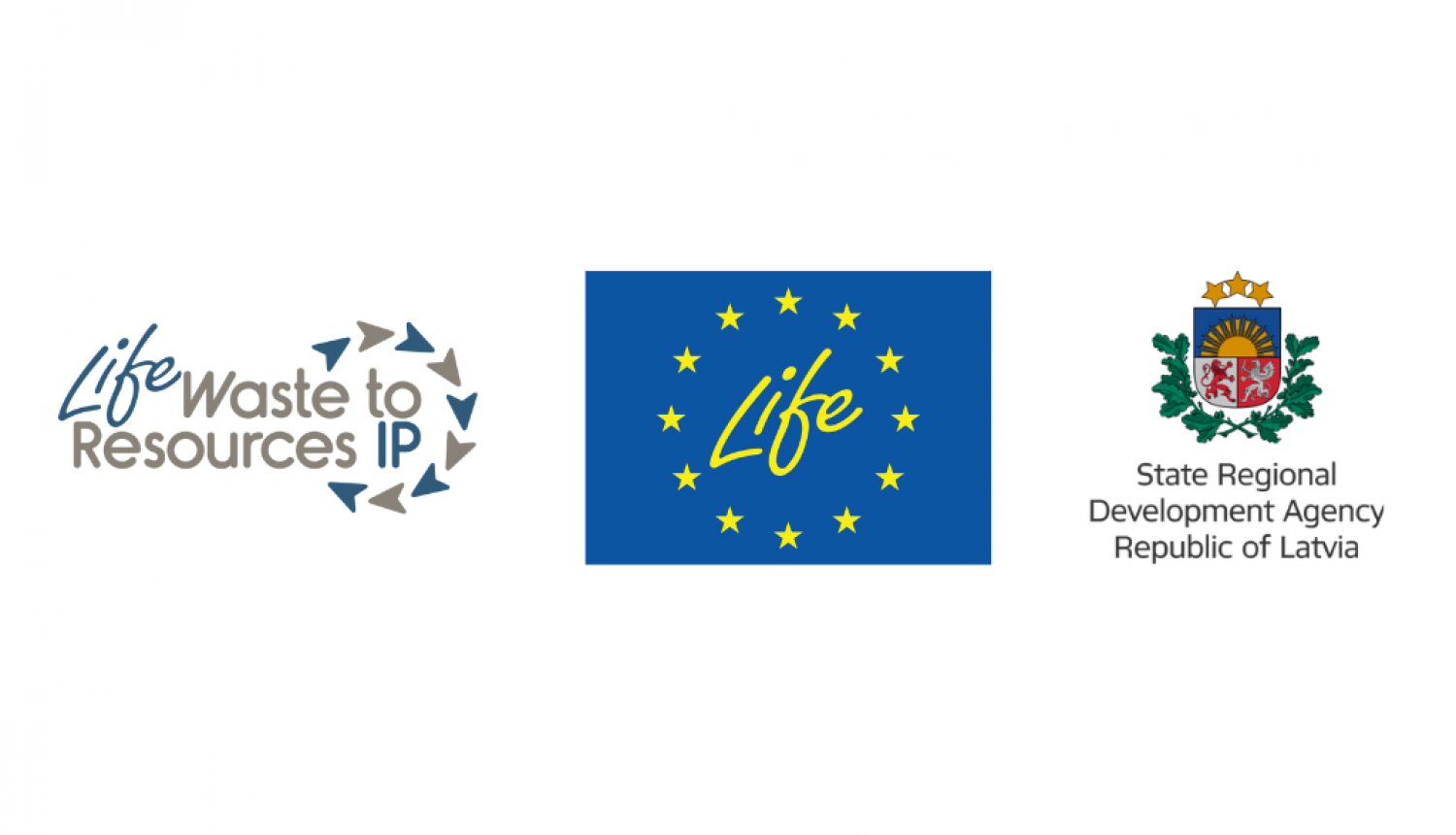Programme and project: European Union LIFE programme 2018-2020 financed project “Waste To Resources Latvia - boosting regional sustainability and circularity” (LIFE Waste To Resources IP).
Project implementation period: 01.11.2021.-31.12.2028.
Project total budget: 15 245 351 EUR, incl:
- EU LIFE programme financing 9 147 210 EUR;
- national financing 5 036 374 EUR;
- private financing 1 061 767 EUR.
Coordinating beneficiary : Ministry of Environmental Protection and Regional Development (MEPRD)
Associated beneficiaries:
- The State Environmental Service of the Republic of Latvia
- State Construction Control Bureau of the Republic of Latvia
- Latvian Association of Waste Management Companies
- Waste Management Association of Latvia
- Latvian Constructors Association
- Limited liability company “ZAAO”
- Limited Liability Company Clean R
- Limited Liability Company “Eco Baltia vide”
- Limited liability company “The Latvian Green Dot”
- Limited Liability Company “Vidusdaugavas SPAAO”
- Riga Technical University
- Association Cleantech Latvia
- Association Green Liberty
- Association Zero Waste Latvija
- Association “Baltic Coasts”
- Cesis Municipality
- Limited liability company “Green Belt”
- Foundation for Environmental Education Latvia
- Limited liability company “HyroGas”
- Limited liability company “Druplat”
- Limited liability company “Econova Latvia”
- Limited liability company “Nordic Plast”
LIFE Waste To Resources IP aims at implementing National Waste Management Plan of Latvia (2021 – 2028) (NWMP2028), approved by Cabinet of Ministers of Republic of Latvia 22.01.2021., No. 45. NWMP2028 aims to reduce the generation of waste and its landfilling by introducing measures to support material and goods circularity, and ultimately – reduce the environmental and carbon footprint of the economy, thus facilitating climate neutrality.
LIFE Waste To Resources IP objectives
- improve separated waste collection system by piloting complex management approaches for priority waste streams (biological and food waste, textiles, electronics and ICT, packaging waste etc.) and ensuring safe disposal of specific types of hazardous waste;
- set up recycled building materials circulation system including re-use and recycling, sorting of construction waste at construction sites and improve building material and waste accounting;
- improve and advance the market for secondary raw materials, reusable and recycled goods, by establishing preconditions and enabling policy instruments;
- reduce landfilled waste amounts by improving waste sorting, recycling, including treatment of non-recyclable fraction of municipal solid waste;
- increase material resource productivity and promote waste prevention and reduction of GHG emissions in all spheres of the economy;
- promote synergies among industrial production, eco-innovation and waste prevention
- improve waste management planning at national and regional level and implement mechanisms through strategically-planned capacity building actions;
- provide support to respective authorities for improvements of respective legislative and regulatory documents and policies;
- expand and deepen co-operation among stakeholders (local governments, industry, scientific and educational institutions and NGOs), as well as to establish and strengthen co-operation with neighbouring countries for more sustainable waste management;
- carry out comprehensive and proactive public information, education and awareness raising work to ensure the involvement of various stakeholders in the implementation of the NWMP2028 and regional waste management plans by changing their attitudes and behavioural patterns in terms of consumption, waste production, and reuse, including choices to mitigate climate change.
LIFE Waste To Resources IP expected results
LIFE Waste To Resources IP will contribute to reach waste management targets in the NWMP2028, particular contribution to the targets by LIFE Waste To Resources IP activities:
- improved separated collection of the waste;
- up-cycling and reuse of municipal waste;
- recycling of packaging waste;
- deviation of biodegradable and recyclables from landfilling;
- reaching wide public acceptance of waste avoidance and waste as a material concept.
In the long term, the LIFE Waste To Resources IP envisages:
- implementation of extensive replication and transferability activities, including the development of action plans and assessments for the next period NWMP;
- cooperation with neighbouring countries for the development of harmonised waste management:
- strategies and actions implemented;
- innovative prototypes and support tools, as well as established cooperation networks and increased knowledge and skills of the target groups on sustainable waste management and circularity aspects;
- promote and mobilise a wider uptake and replication potential for the waste reduction measures
Project web page: LIFE Waste To Resources IP
LIFE Waste To Resources IP social media:
Project manager
Alise Vecozola – Head of LIFE Integrated Project Implementation Division, Environmental Protection Department, MPERD (alise.vecozola@varam.gov.lv).

